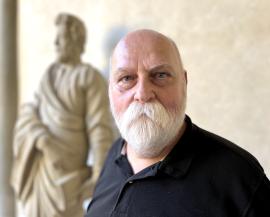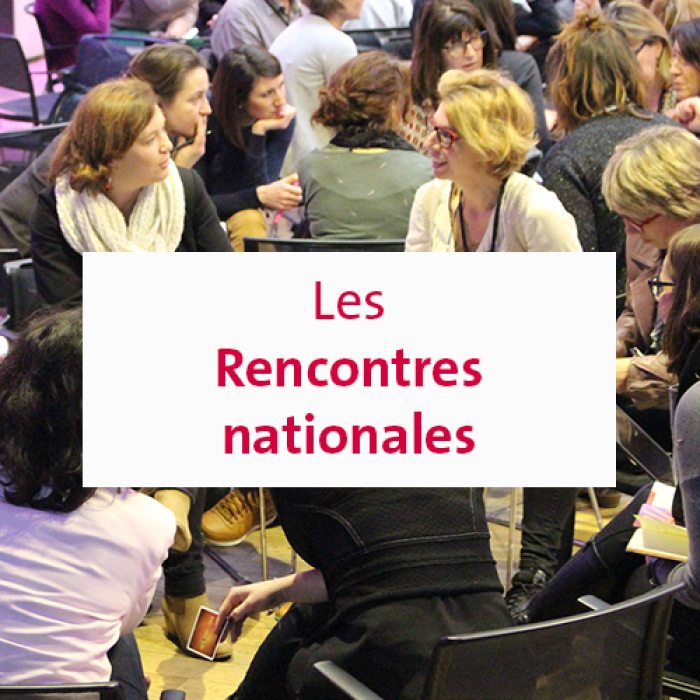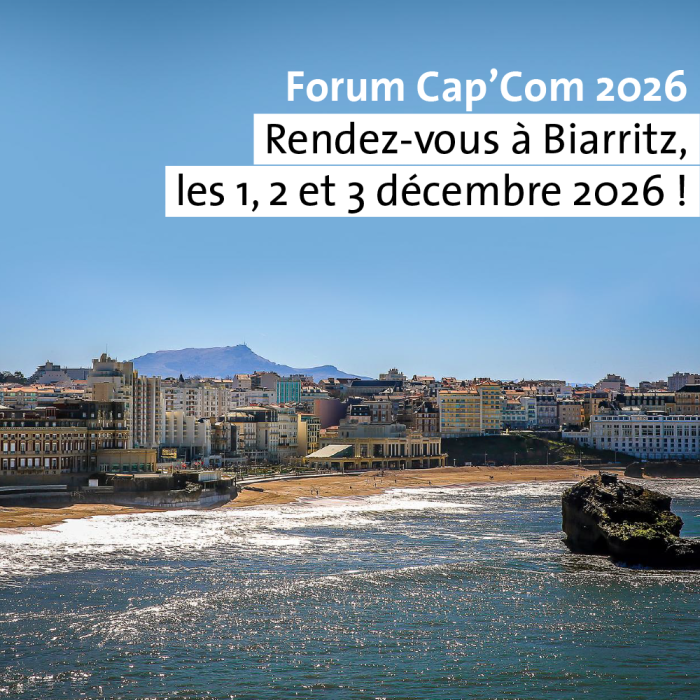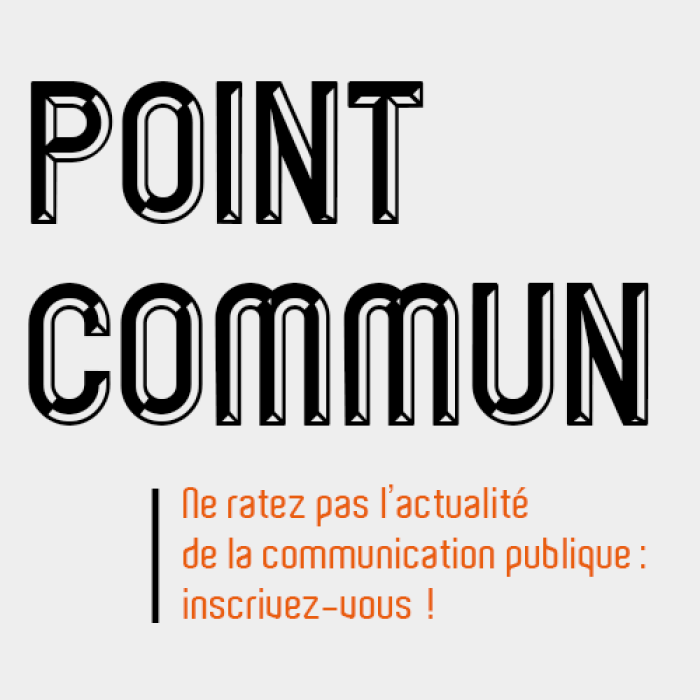
A desire for “conversational” public communication
Public communicators want to be heard by citizens; they want to be listened to! A few days after the EuroPCom, Philippe Caroyez, drawing on his experience in the Belgian civil service, asks us: how can we approach public communication in a more humanistic way?
By Philippe Caroyez, sociologist, advisor in the External Communication Directorate of the Chancellery of the Belgian Prime Minister, former director of the Belgian Federal Information Service. Member of the Club of Venice (public communicators of European governments) since 1992, columnist and sub-editor of its magazine Convergences. Member of the advisory board of EuroPCom, of which he was a founder in 2010.

Public communicators respond only indirectly to “social demand”, subject as they are to political control, doing only what politicians tell them to do. That is how it works in a democratic system where the elected or mandated authorities take care of what they consider to be in the public interest (which is not the same as the interest of the majority) and what they perceive and retain (or are willing to perceive and retain) from the demands and signs that emerge from society and its components.
However, the profession of public communicator would be a hollow and disembodied one if those who practise it and are responsible for it did not take an interest in social demand, in the ways in which it emerges and is made understandable (1), in being responsive to it and in helping to respond to it with proposals and solutions that are within their field of expertise and professional action. Communicators will be all the more effective (and sometimes annoying) if they carry out their tasks with professionalism and ethics and if they know how to draw on the sociological research and practical experience of their peers and counterparts.
This fundamental approach is based on :
- a commitment to public service (and to serving the public) and the quest for its continuous improvement;
- the willingness to understand and learn about social practices and the needs they create for being informed and heard on social demands;
- reflective and critical feedback on our communication actions;
- a professional community and network and the sharing of knowledge and experience.
Cultivating a solid humanist awareness for our work as public communicators.
Chacun le vit et le fait vivre à sa manière, avec ses moyens, à son niveau, avec plus ou moins de contraintes ou de soutien, mais il y a là pour qui le veut (ou le peut – soyons de bon compte) de quoi nourrir une pleine conscience humaniste pour nos métiers de communicant public.
Pour paraphraser Jean-Paul Sartre, il faut que (le bel exercice de) la communication publique soit un humanisme…
Everyone experiences it and brings it to life in their own way, using their own means, at their own level, with different degrees of constraint or support, but for those who want to (or can – let's be honest), there is enough here to cultivate a solid humanist awareness for our work as public communicators. To paraphrase Jean-Paul Sartre, (the beautiful exercise of) public communication must be a humanism.
What is changing is that nothing – or very little – is changing
Beyond what we do, in our professions and in our offices, we all (somehow) keep an eye on trends, those trends that are already under way or are taking shape. These trends are also reflected in the innovative actions being introduced by colleagues or, it must be said, in commercial sectors such as marketing. These trends are also the subject of specific research, which is being carried out by academics or by these colleagues. For example, behavioural science and decision logic (with nudge, budge, boost, etc.) as well as artificial intelligence, chatbots, content strategy and design, and “conversational” communication are just some of the notable trends. A few years ago, our Dutch colleagues showed us the way, so to speak: using the opportunity of an official debate on public communication in their country, they conducted research to identify developing trends which they then made sure they included in their policy. While others would have focused purely on “citizens’ expectations” (which they also did), they paid particular attention to the conditions of public communication and its development.
The trend towards “all things web” and the almost magical effect of (so-called) social media also played a part in our work, to the point of devising a “digital diplomacy” that could bring about a McLuhan-like triumph, where the medium becomes the message. Technological progress, here in the means of communication, is certainly (and always has been) an obvious factor in social change. But as is often the case (compare the evolution of free radio and community television), it is not the panacea that solves the ultimate question of the relationship among citizens and between citizens and public authorities. The most important thing is therefore not a slavish attachment to technologies, but the scalable integration of these technologies into our communication and public debate policies, by giving them a much-needed value framework. And at a time when artificial intelligence is opening up new possibilities in this area, the priority remains the same.
It is also interesting to note how recent developments (including, of course, in our own circles) have gone from an enthusiastic infatuation to finally – sometimes reluctantly, but more and more assuredly – shifting the focus (the trend) to the problems of disinformation and the difficulty of countering it and legislating on it, data mining and the exploitation of personal data with the very feverish introduction of the GDPR, and – on this basis – the manipulation of our opinions and public debate. While this is all well and good, we are convinced that the “real” issues of public communication are, and remain, deeper (and are arguably not addressed enough):
- At the root – the indispensable civic and media education, with public support for independent and quality media;
- At the heart – the importance of the relationship between the citizen and the state based on humanistic values and earning trust;
- Always – the need to maintain and strengthen (sometimes in line with these new trends, sometimes in response to them) the commitment to public service communication; and to be effective.
Given the budgetary restrictions that generally affect our services, this last requirement calls for a dynamic organisation that can cope with and/or integrate changes and trends.
Citizens want to be heard!
Developments in public communication are closely linked to developments in public policy (and sometimes vice versa). This applies to consultations set up by public authorities or services as part of the decision-making process or the direction given to decisions. These “modern” public consultations date back to the 1980s and have kept their original character to this day: formal and limited, often guaranteed by law, organised as an administrative or legislative process, and intended for specific cases in particular areas (land use planning, public facilities and the environment, for example). In this context, the role of public communicators and public communication has remained instrumental – wrongly so – and is often detrimental to the public authorities themselves.
Over time, the fracture between politics, public institutions and citizens, which has been reflected in widely recognised phenomena (abstentionism, rise of the extreme right, loss of confidence in politicians and institutions), has led to attempts to introduce measures to bridge the gap between the authorities and citizens. Here too, public communication has been brought into play, along with (often standard-setting) provisions such as transparency of the administration, access to administrative documents, mediation services, “active” advertising imposed on public institutions, “public kiosks” (single points of contact, post office boxes, call centres and “freephone” numbers), and the supposed resulting transformation of the “citizen” into a “public service customer”! It is also the golden age of large (and expensive) information campaigns in the traditional media and on billboards.
Even if there was a tendency – in principle – to want to improve representative democracy with a dash of participatory democracy, real participation initiatives have been and still are (!) rare and often painstaking. Moreover, they have always been confined to the local level (only), which is certainly the closest to citizens and associations, but it is also the smallest. With the exception of referendums (which are not held in all EU countries), public authorities have rarely consulted citizens on issues of national importance: only the British consultation on the reform of its national health service comes to mind.
In this regard, to quote Pierre Rosanvallon’s unambiguous statement: democracy is incomplete. Consequently, an increasing number of voices (outside and beyond the traditional intermediary bodies and pressure groups) is today clamouring to be heard and take part in decision-making against a fuel tax (giving rise to the “yellow vests” movement) or in favour of radical measures to address environmental issues (giving rise to numerous unstructured movements in Europe, especially among high school students).
An ecological approach to public communication
Si nous plaçons le champ de la communication publique à l’intersection entre le pouvoir d’État et le corps social qu’il représente, administre et domine (pour une part), ce qui n’est qu’une vue (d’ailleurs fausse, mais parlante) de l’esprit – sur le modèle canonique de la communication –, nous induisons que la formation comme l’évolution de celle-ci sont tributaires de ces deux pôles, de leurs états et de leurs évolutions. Et ce, plus fondamentalement qu’elles ne seraient tributaires, comme on le lit trop souvent, du seul développement (ou plutôt de la transformation) des technologies et techniques dites de communication. Ces dernières – comme la fusion du numérique, de l’audiovisuel et d’une certaine mise en réseau mondialisée – jouent certes un rôle important, mais, pris par l’idéologie techniciste (présente dès le début de l’étude des phénomènes communicationnels), nous y mettons trop l’accent soit comme seuls phénomènes explicatifs, soit (pire) comme seules solutions à envisager, par exemple, dans le cadre de la réflexion sur l’évolution de nos services.
C’est ce que résume parfaitement Dominique Wolton, lorsqu’il écrit « Finalement dans la communication, le plus simple reste du côté des messages et des techniques, le plus compliqué du côté des hommes et des sociétés », dans son livre au titre comme un (r)appel, Informer n’est pas communiquer (2). Plutôt que de solliciter la technologie et d’y investir si largement, il faudra plus modestement, mais plus fondamentalement, que les communicants publics (toujours sous la conduite et au service de leurs autorités) questionnent la relation entre pouvoir et administrés, et asservissent la technologie et leurs actions au renforcement de ce lien.
If we place public communication at the crossroads between state power and the social fabric that it represents, governs and controls (in part), which is only a (false, but telling) figment of the imagination – according to the canonical model of communication – we imply that both its formation and its development are dependent on these two aspects and how they work and change. This is more fundamental than being dependent, as is too often stated, on the development (or rather the transformation) of so-called communication technologies and techniques alone. These technologies and techniques – such as the fusion of digital, audiovisual and some form of globalised networking – certainly play an important role. However, caught up in our technicist ideology (which has existed since we started studying communicational phenomena), we place too much emphasis on them either as the only explanatory phenomena or (worse) as the only solutions to be considered when reflecting on the way we develop our services, for example.
This is what Dominique Wolton sums up perfectly when he writes in his book entitled (as an appeal or reminder) Informing is not Communicating (2): “Ultimately, in communication, the simplest things are messages and techniques, and the most complicated are people and societies“. Rather than relying on technology and investing so heavily in it, public communicators (always under the guidance of their authorities) must question the relationship between the authorities and the people they serve, and make technology and their actions dependent on strengthening this link.
For a moment, we should step out of the box of what we do not only best, but also most effortlessly.
At a time when the need for participatory democracy and sustainable development is being pushed to the forefront (in our societies), public communicators must have the courage to make these observations, learn from them and help their authorities completely transform public communication and the professions and services responsible for it. They must effectively switch from information to communication, to being bridge builders. For a moment, we should step out of the box of what we do (not only best, but also most effortlessly) – producer, relay and disseminator of information – and start (again) from a blank sheet. However, even if our services have a leading role to play, at least in principle, the choices in this area can only be made through constructive dialogue between politicians (the authorities) and citizens, entrepreneurs, intermediary bodies and associations. Somewhere between the obvious, the necessary, the socially useful and a kind of utopia is where we would be if we did what we are not doing (or are doing very little of), such as:
- involving citizens, entrepreneurs, intermediary bodies and associations in defining and evaluating policies, objectives and means of communication;
- introducing performance indicators based on understanding, meeting needs, managing and fulfilling requests, social utility, the concept of value for money, and so on, effectively moving from results to impact;
- evaluating all communication campaigns (very closely) and all public policies;
- focusing on inclusive communication, without stereotyping or discrimination (including access to information);
- making the job and function of public communicator a “linking profession”;
- ensuring that there is no information without effective communication (capacity for dialogue, commitment to respond to requests, assistance, no digital divide, relay and follow-up to the authorities concerned, etc.);
- cleaning up communication, including public communication; moving towards environmentally responsible communication and contributing to the debate on limiting commercial advertising and advertising pollution;
- not issuing anything that has not been previously endorsed by a representative panel of those affected (in accordance with consultation mechanisms to be put in place);
- supporting the definition of a general communication policy at the central level and a clear legislative framework for professional ethics;
- and so on.
What could we achieve if we started this tomorrow?
Retrouvez lors du prochain EuroPCom (13e conférence européenne sur la communication publique, organisée par le Comité européen des régions) des thématiques sur lesquelles Philippe Caroyez a travaillé. Cet événement en ligne (avec interprétariat) aura lieu le 28 octobre 2022.
Find out more about the topics that Philippe Caroyez has worked on at the EuroPCom (13th European Conference on Public Communication, organised by the European Committee of the Regions). This online event (with interpreting services) took place on 28 October 2022.
(1) Voir notamment : Robert Castel, « La sociologie et la réponse à la demande sociale », revue Sociologie du travail, n° 2, vol. 42, avril-juin 2000, p. 281-287.
(2) Dominique Wolton, Informer n’est pas communiquer, CNRS Éditions, Paris, 2009, p. 11.
(1) See in particular: Robert Castel, “La sociologie et la réponse à la demande sociale” [“Sociology and the Response to Social Demand”], Sociologie du Travail journal, no. 2, vol. 42, April-June 2000, p. 281-287. (2) Dominique Wolton, Informer n’est pas communiquer [Informing is not Communicating], CNRS Éditions, Paris, 2009, p. 11.



